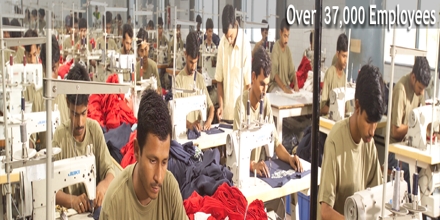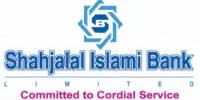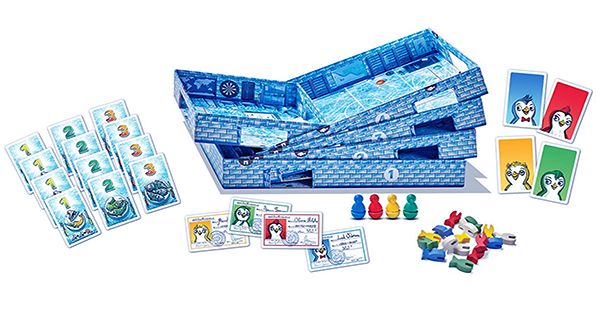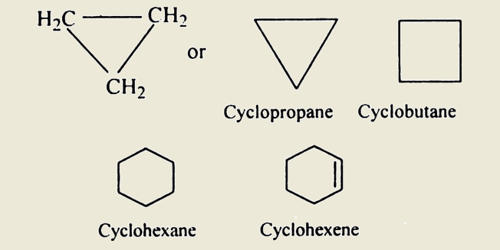Overall Business Process and HRM Activities S Nahar Garments
S Nahar garments is a sister concern of MOHAMMADI GROUP being a company of the leading privet sector business. It gives the highest value of its entire component contributing to the production, management and revenues where the human resource was conceder as the prim factor. An excellent environment in human resource management having very good employee –management communication and relationship, attractive remuneration, benefit and incentive schemes,super working condition maintaining the international standers of compliance have ensure the highest level of job satisfaction and resulted to retaining of skilled manpower through whom brought the sheer success for the company.
S Nahar is a ISO certified company because of their good quality assurance in every sector they got this international stander certificate.
At the same time the company believes its employee are the asset of the company and they are the most important element of their precious environment
COMPANY PROFILE:
S Nahar garments is a modern garments engaged exclusively in development and production of readymade garments. Here is a profile of S Nahar garments in below-
NAME OF THE COMPANY: S Nahar garments and textile mills ltd
Establishment : 1985
In charge : Mr.Ataur Rahaman (G.M)
Line : 06.
Listing Status : Privet Limited Company
Work Force : 756.
Machine : 371.
Space : 34,000 Sq ft.
Main Products:Woven Shirts – Men’s, Ladies & Children’s Item.
Production Capacity : 8,000 Dz. / Month.
Functional Departments:
Sample Section:
Sample section made flowing types of sample
- Proto sample: 1st sample submit to buyer.
- Fit sample: Fit sample made after the approval of proto sample.
- P P Sample: Pre production sample made just before the production.
- Top Sample: Top sample is a production sample. The production sample be taken from the actual production line.
STORE:
- After receiving of goods INVENTORY should take place IMMEDIATELY.
- Check consumption and quality of fabrics and accessories and submit report to merchandiser as well as P.M. as soon as possible
- If any discrepancy found, take action without any delay and keep pushing to the concern person unless the problem is solved.
- Keep records up-to-date of all incoming and out going.
- It is important that, you keep all the records up-dated.
- Remember store is the heart of garment industry.
Store section inspect fabric accordance with the “Four Points System.” The system are as flow :
-Fault less than 3”/7.5 CM in length – 1 point
-Fault up to 3”/7.5 CM to 6”/15 CM in length – 2 points
-Fault over 6”/15 CM to 9”/22.5 CM in length – 3 points
-Fault over 9”/22.5 CM in length – 4 points
-Hole size less than or equal to 1”/2.5 CM – 2 points
-Hole size more than 1”/2.5 CM – 4 points
CUTTING SECTION :
It is understood that once fabrics are being cut everything is over.You have no scope to change even a minor point required to be changed.Therefore,before we go for cutting we should:
- Check width,shade and quality of fabric.
- Confirm the face of fabric
- Check lay – face,shade,width and height.
- Check maker wheather it is in accordance with the quality of fabric or not.
- Cut fabric smoothly so that the shape of parts remain as per pattern.
- Check each part with pattern so that any discrepancy in cutting can be short out and replaced before it go in to line.
- Bundling and numbering should be mentained to avoid shading.
- Maintain register of your supply in size and color way quantity.
PRODUCTION:
- Before you go into any production, clean all the machines.
- Compare approved sample before you go into production.
- Make operator understand that, what has to be done.
- Make in line Q.C. understand that, what has to be checked.
- Make sure that, every operation done properly.
- Check measurement pice by pice in line where it is required.
- Avoid dumping in line. Neither on table nor under the machine.
- Don’t keep any goods on the floor.
- Insure that, no dirty or oil mark in garment.
- If any fault is found , don’t lay it down for next day. Rectify it within production hour.
- Please cut thread as much as possible in line.
- Ensure quality that is :
- All parts joint properly
- All measurements are acceptable
- No shade garments is made
- No joint stitch, broken stitch and skid stitch is here.
- No dirty or oil mark is here.
- No uncut threat is here.
Finishing section :
- After receiving goods from sewing floor, keep record in size and colour.
- Clean un cut threads both from inside and top of garments.
- Iron properly, confirm folding.
- Check hang tag, barcode sticker, poly etc.wether these are in accordance with P.O. or not.
- Don’t use any dirty or crush poly.
- Confirm assortment.
- Close cartons but cheque :
- Paper gum tape are being used.
- Belting with p.p tape or with any other materials are being done in accordance with p.o
- Conduct a pre inspection by quality controller before you offer final inspection.
Now you can offer your buyer for inspection
HUMAN RESOURCE MANAGEMENT
- Conducting job analysis.
- Planning labor needs and recruiting job candidets.
- Selecting job candidates.
- Orienting and training new employees.
- Managing wages and salaries.
- Providing incentives and benefits.
- Appraising performance.
- Training and developing.
- Building employee commitment.
What is production?
Production is a business activity that uses people and machinery to convert materials and parts into salable product. Two type of company engaged in this activity. A processing company, the first type, is a firm that converts natural resource to raw material. The second type is a manufacturing company that converts raw materials into consumer and industrial goods.
Product are often use to make other product, so one firms finished may be another firms component part. This type of interdependence is common.
Production methods:
All product can not be made in the same way , the nature of the product determine how it will be produce .traditionally these method can be classified as analytical, synthetic, continuous, intermittent.
Analytical process:
In the analytical process, raw material is broken down to form new product
Synthetic process:
Synthetic process is the opposite of analytical process, because materials are combined instead of separated to form a certain product.
Continuous process:
Continuous process is a production method that use the same machinery performs the same operations repeatedly over relatively long period of time.
Intermittent process:
Firms that use intermittent process is engaged in a production process that shuts down equipment periodically and readjust it to make a slight different product. Production does not run the same day in and day out. the intermittent process is used by job shop, companies that make product to customer individual specification.
PRODUCTION CONTROL
Production control, one of the most important concerns in making a product, is coordinating the interaction of people, materials and machinery so at products are made in the proper amounts at the required times to fill orders. Six steps are involved: planning, routing, scheduling, dispatching, and follow-up and quality assurance
Planning:
Successful production, like other successful business activities, is based on planning. Production planners know what materials, equipment, process, and working time must be allotted to make a given time. Often they re form^.~ production workers themselves, so they can visualize the end product at various stages of completion, knowing from experience what remains to be done.
The production plan is a document that contains a list of materials and equipment needed to manufacture a finished product that also specifies which operations will be performed in- house or out-of-house. In addition, this plan reveals any operations that require special machinery or equipment to be brought out of storage or purchased and set up when the product reaches a particular stage of completion.
Production planer like S Nahar garments. They coordinate the performances of purchasing, manufacturing, shipping and marketing, all of which contribute to or need information about the status of an order at various stages of completion.
Routing:
Routing is the production control step in which a logical sequence is established for the operations that the product must undergo on its way to completion. Each job’s path is defined, thus determining what work will be done at what point. The person handling routing for a brewery must take into account all of the following steps: germinating the barley gain, cleaning it, milling it, weighing it, cooking it, blending it with water, removing the grain solids to produce a clear liquid, brewing the liquid, straining out hops, cooling the liquid, fomenters it, and again, filtering and packaging the beer.
Scheduling:
Scheduling is the production control step that allots time for each operation along the route. Knowledgeable production planner is asset here. Schedules that allow too much or too little time can lead to slack periods in various departments, causing wasted time and perhaps employee layoffs, or create bottlenecks that back up work at certain points, causing late deliveries and canceled orders. Production planner also has to take network time into account. A production planner who does not know how much time to allow will leave workers idle at next step along the route.
A product rarely follows the original schedule from start to finish. Production planner must reschedule work in process because of canceled orders and customer requests of earlier delivery dates of because of a machinery breakdowns, design changes, strikes, and inclement weather, all of which can cause lost work time and delays in the delivery of essential materials.
Dispatching.
Dispatching occurs after jobs have been planned, routed, and scheduled. This is the production control step in which a production planner release a job to the first production department on its route. Before dispatching, production control employees must gather up the materials and parts required by the production plan and issue them to the correct department.
Follow-up:
Follow-up is the production control step in which production planners monitor each job’s progress along its route, and report and attempt to deal with any delays or difficulties that occur. A job is usually identified by number so it can be traced from one operation or department to the next. Follow-up is essential in these cases to ensure that work moves according to schedule. When delays occur, production planners should be notified so they can bring the job back on schedule or reschedule it.
Human resources inventory:
Provides information about the organization’s present personnel. What are the skills, abilities, interest and qualifications of the present employees? The personnel inventory allows the managers to match the organizations present personnel strengths and weaknesses against the future requirements. When the decision is made to recruit new employees, information must be gathered on each position. Jobs are not tailored to fit applicants- employee must be chosen to fit jobs. Human resources managers must analyze and describes the nature of each job in the organization. At the same time they must establish minimum requirements so that suitable applicants can be hired. This information is developed through job analysis, job description, and job specification.
Job analysis
Job analysis is the gathering and analyzing of data about a specific job so that a job description and job specification can be written. It clarifies the nature of the work and the conditions under which it is done.
Job description
Job description is a written summary of the scope, function, duties, responsibilities, and relationships involved in a job. Job descriptions help management to select, orient, and compensate employees effectively.
Job specification
Job specification is a document that describes the characteristics and qualifications needed in someone who could successfully perform a given job. Job specification helps managers determine an applicant’s fitness for a certain position by defining qualifications for education, training, experience, and behavioral qualities the person must have to perform the job. A company is much more likely to recruit and eventually sect beer employees if it has clear job specification.
RECRUITMENT:
By recruitment the organization attempts to identify and attract candidates to meet the recruitments of anticipated or actual job openings.
Objectives. –
- Ensuring compliance by organization with government Regulations
- Maximizing the pool of applicants at minimum cost.
- Attracting suitably qualified & skilled applicants.
S Nahar follows some General Guide Lines for recruitment
- The Company employs the best person for every position amongst those available for selection, according to the company’s authorized Employment procedure.
- No employment in any category can be made unless the position has been approved in writing by the management.
- Minimum Educational standards are laid down for every position depending on the requirement of the position.
- No discrimination is made in selection due to religion, cast, creed or Regional considerations.
- Company does not recruit any child labor.
- Minimum age of the workers is 18 years. It will not be relaxed under any circumstances.
- Probation period is 3 to 6 months.
- Workers are entitled to enjoy all leave as indicated by the company policy and in conjunction with the Bangladesh Labor & Industrial Act.
- Increments & promotions are given based on the individuals’ skill & performance without any discrimination.
- Maternity benefits are given to the female workers as indicated by Bangladesh Labor Ordinance Instruction.
- No discharged or dismissed workers of the company shall be reemployed except under the requirements of law.
- Any person related to any employee of the company, might it be the management or a supervisor, will not be employed in the department supervised or managed by such members. This is necessary to prevent likely friction, suspicion, criticism and possibilities of favoritism.
- Those who have been convicted by any court of law for criminal offences like theft, assault, forgery, murder and the like will not be considered for employment if it has been declared to the management. In the event the management finds out at a later date, we will not allow the person to work as they made a false declaration at the time of interview.
- The date on which the employee reports to work after recruitment will be the date of his appointment in the company. The probationary period of employee will begin thereafter as usual.
There are two sources of applicants- internal and external. Internal sources are the employees of the organization. This has a positive impact on the organizational member and the internal working environment. The opportunity for advancement has three distinct benefits:
- It can reduce turnover.
- Provide incentive to learn jobs quickly and
- Assist in making the individual a functioning member of the organization faster because the person already knows the policies and expectations of the company.
Another method is to attract candidates by announcing job openings in company news letters and by posting position vacancies on bulletin boards. This strategy provides all employees the equal opportunity to apply of they see the notices.
Types of Recruitment:
As per this schedule of recruitment,– selection of any personnel against any specific post will be done in two ways as follows:
- Direct recruitment, and
- Recruitment through promotion.
Direct Recruitment:
It will be done through open advertisement. None of the applicants will be considered for direct recruitment unless he/she:
- Fulfils the criteria mentioned in SIL schedule.
- If any post as per schedule is not available for promotion.
- And if it is not referred by the selection committee.
Probation:
- Anybody recruited directly will be under probation for a period of three months. But the concerned department or recruiting committee can extend the probation period for further three
- The management has right to cancel the service contract if his/her performance is found to be unsatisfactory during the probation
- Confirmation of service depends on the satisfactory performance of the candidate.
Recruitment through Promotion:
- Management can fill certain posts through promotion if candidates are found available & suitable for the required post.
- None will be considered for promotion if his/her service record is
Recruitment Procedure:
- Providing advertisement in the newspaper, local areas
- Providing notice on the notice board.
- Head-hunting
Interviews are conducted on the candidates, which includes the following process.
- Viva voice
- Practical test on individual’s skill.
- Health test by company appointed physician.
Appointment letter is issued to the selected candidate that includes the detailed terms of employment.
Upon joining the company, a separate file is created for the individual worker in order to maintain his/her service records. This file contains the following information.
- Detailed bio-data of the employee.
- Job application.
- Evaluation report during the interview.
- Educational certificates and/or .
- Age certificate.
- Increments & benefits.
- Awards & Punishments.
- Accident records.
Interpretation:
Form my point of view internal sources sometimes may not hold good for mid and upper level positions requires specialized training and experience, if they are not available within the organization.
For certain opening it may be necessary to hire individuals from the outside who have gained form another employer the knowledge and experience for the jobs.
SELECTION:
Selection is the process of deciding which candidates, out of the pool of applicants developed in recruiting, has the abilities, skills and characteristic that most closely match job demands. The decision comes after the candies go through a series of steps that compose the selection process.
Selection process:
The decision making system used to identify which job applicants are best suited to the vacant position.
Key aspects:
-Reliability
-Validity
-Selection devices.
ORIENTATION:
Once an employee is hired, it is important to bring the person into the mainstream of organization as quickly as possible. firms accomplish this by developing and orientation program-a series of activities that gives the new employees information to help them adapt to the organization and their new jobs.
















